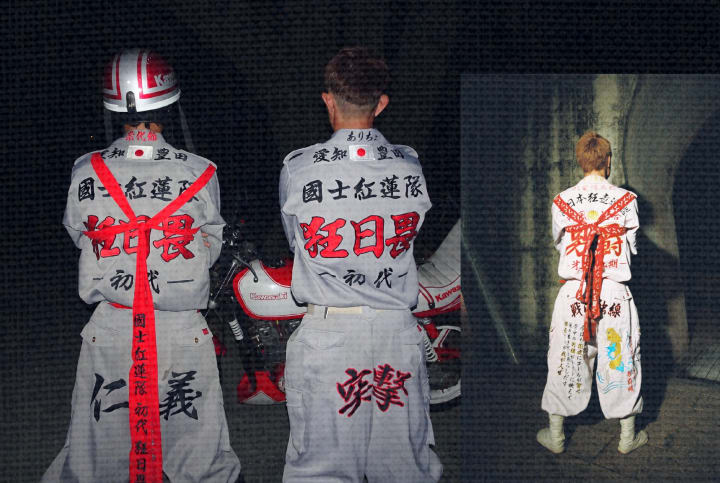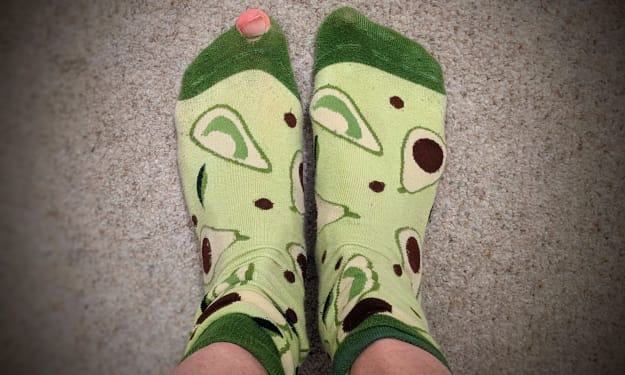The Gaudy Life
An exploration of fading ornamental fashion.

Living the Gaudy Life
Why is it that modern society gravitates toward mundane fashion choices such as hoodies and jeans even after centuries of luxurious fashion breakthroughs? What has happened to the ornate bedazzlement of everyday clothing that has pronounced historical fashion?
Ever since humans began fashionably dressing themselves, there was an importance of brandishing oneself in order to show your status in society. In medieval times it was about the quality of a tailored garment and how it was bedazzled with beads and threads. In the era of Miss Marie Antoinette it was about the flashy over exaggerated size of skirts paired with histrionic hair and makeup. In the Victorian period of fashion, women would show off the latest looks with gorgeous fabrics from around the world that would be sewn into elegant corsets, skirts, bonnets, and petticoats. While these intense fashion periods dissolved over time they lead us into the rapid fashion of the 1900s into what we wear today.
To say the least, the fashion of today is vastly different. Constant social media trends and competing clothing brands control what societies deems as fashionable. This forces the majority of the market to produce what is called ‘fast fashion.’ People always want the new ‘thing’ and this aspect of fashion history has abolished the beautiful garments that people once used for everyday wear. While high fashion brands like Gucci, Dior, and Versace still make incredibly garish fashion for the wealthy to flaunt, there is still an element of fast fashion and undesirable hype behind them.
Today people look to fashion no longer to impress each other with the artistry behind the clothing but instead to impress with the hype and high price behind a garment. Look at Supreme, a once small skateboard and clothing brand established in Manhattan circa 1994. Over the years Supreme was able to reach its success by following skate culture and the way it was evolving. Founder James Jebbia recognized that if the quality of a plain hoodie went up then skaters were willing to pay more. Eventually skate culture rose into mainstream popularity and Supreme was able to do collaborations with big name fine artists which gave the brand a larger audience. In 2012, Supreme launched a collaboration with Comme des Garcçons, a major fashion brand. This collaboration made Supreme important in the eye of all things fashion. Today the hypebeast culture following Supreme and other similar brands have created a culture in buying and reselling items. So uh… what does that mean for the buyers? Now, all because of an items ‘rarity,’ the price on an item that was once twenty dollars is now two hundred dollars or maybe even more. This unfortunately has forced fashion culture to be very different than how it was in the distant past.
What is NEEDED in today’s fashion is a fresh sense of pure excitement for a singular garment. It is essential for society to bring back the intense bedazzlement of garments so that fashion culture can focus on the artistry once again. Fortunately, this movement does exist in small pockets around the globe. Two strong examples of people living the gaudy lifestyle are the Crust Punks from England and the Bosozoku (暴走族) subculture of Japan.
Crust Punk is a subculture of punk originating from 1980s England. The culture revolves mainly around music of the heavy metal punk genre with lyrics focusing on politics and societal unrest. Crust punk specifically has an important visual aspect that involves heavily patched and distressed clothing, including one garment coined as the ‘crust pants.’ The crust pants are iconic to the punk genre as they are visually fantastic and striking. The crust pants are made by the wearer by deconstructing and reconstructing a pair a black jeans to look as though the pants are made of patches. More patches and textures can be sewn on top to achieve the wearers desired look. One source even states that elements such as jam for toast was used to stiffen the pants and add a shiny look. People keep their crust pants for years while sewing more to them as they distress into raggedy threads. These pants do not contain much monetary value but that is partly what is so appealing about them. They are individual non-fungible works of art with heart and story behind each pair. They contain memories of specific concerts, partys, and loved ones. The punk culture is famous for many visually striking fashion choices such as mohawks and fishnets but the crust pants stand out in a way like no other.

Another garment that is unlike no other is the gang uniforms known as tokkoufuku worn by the Bosozoku gangs of Japan. The Bosozoku gangs of the 1970s were working class men of Japan who often were affiliated with right wing culture. The early tokkoufuku uniforms were fairly simple jumpsuits brandishing a few symbols such as the name of the gang and the wearer's gang name. As police began cracking down on biker culture, for the cause of reckless driving, the Bosozoku gangs became less and less frequent throughout Japan into the 1990s. Members would leave behind the fast paced lifestyle of the motorcycle but keep the uniform that still symbolized their gang. The status of a gang member was no longer about the bikes but instead the uniform. Over time this pushed gangs to compete in an almost fashion runway of who had the most striking uniform. Oftentimes the entire suit would be elegantly embroidered with little empty space left. Uniforms like these would end up costing upwards to 10,000 dollars for the costs of labor. Unfortunately, these uniforms are on a path to vanishment as police forces and lawmakers across Japan have made the uniforms illegal to own due to their gang affiliation. Today the uniforms are in deed in a taboo light as they ‘inspire’ juvenile delinquencies but the artistic sartorial culture keeps the tokkoufuku alive.

Despite the fashion norms of today being dictated by major brands and social media hype, there are still subcultures who wear clothing for the visually striking appearances they give an individual. In order for gaudy fashion to stay afloat amidst fast fashion, these subculture garments need recognition and credit. Today these garbs have inspired people to create their own bedazzled and over the top looks. For example, many fashion subcultures have gained popularity on social media like TikTok. Hopefully these subcultures continue to inspire people to create new fashions. Through these actions original movements are kept alive through history and are able to inspire more looks into the future.
Sources:
https://www.vogue.com/article/history-of-supreme-skate-clothing-brand
https://features.japantimes.co.jp/tokkofuku/
https://www.terminal-boredom.com/crustpants.html
About the Creator
Lumsy Nepp
I am a costume enthusiast and lover of all things out of this world. I explore all things of this planet and study how they may influence my own art in a way that has never been seen before.
Instagram: @goldfishgaud
YouTube: LUMSY






Comments
There are no comments for this story
Be the first to respond and start the conversation.